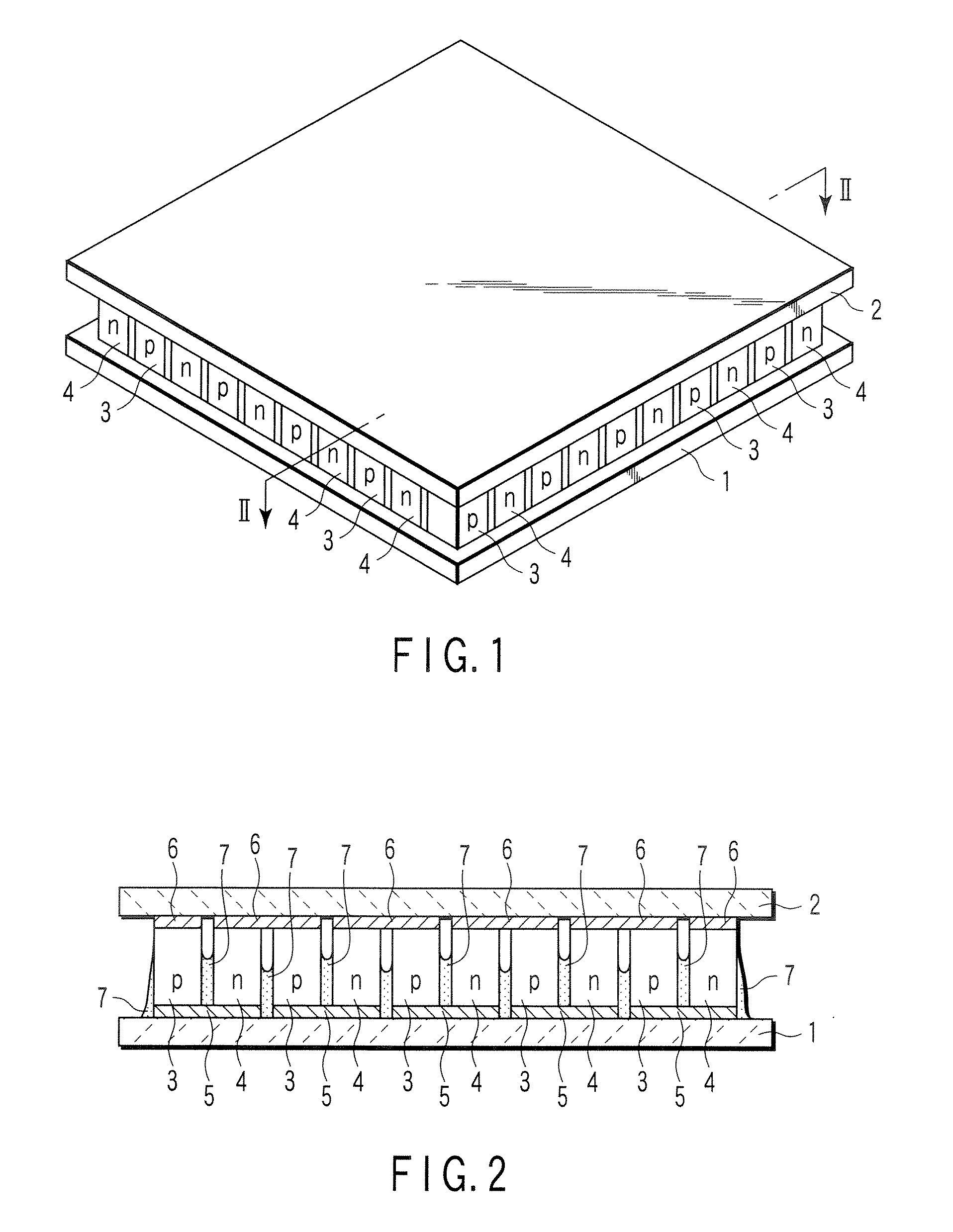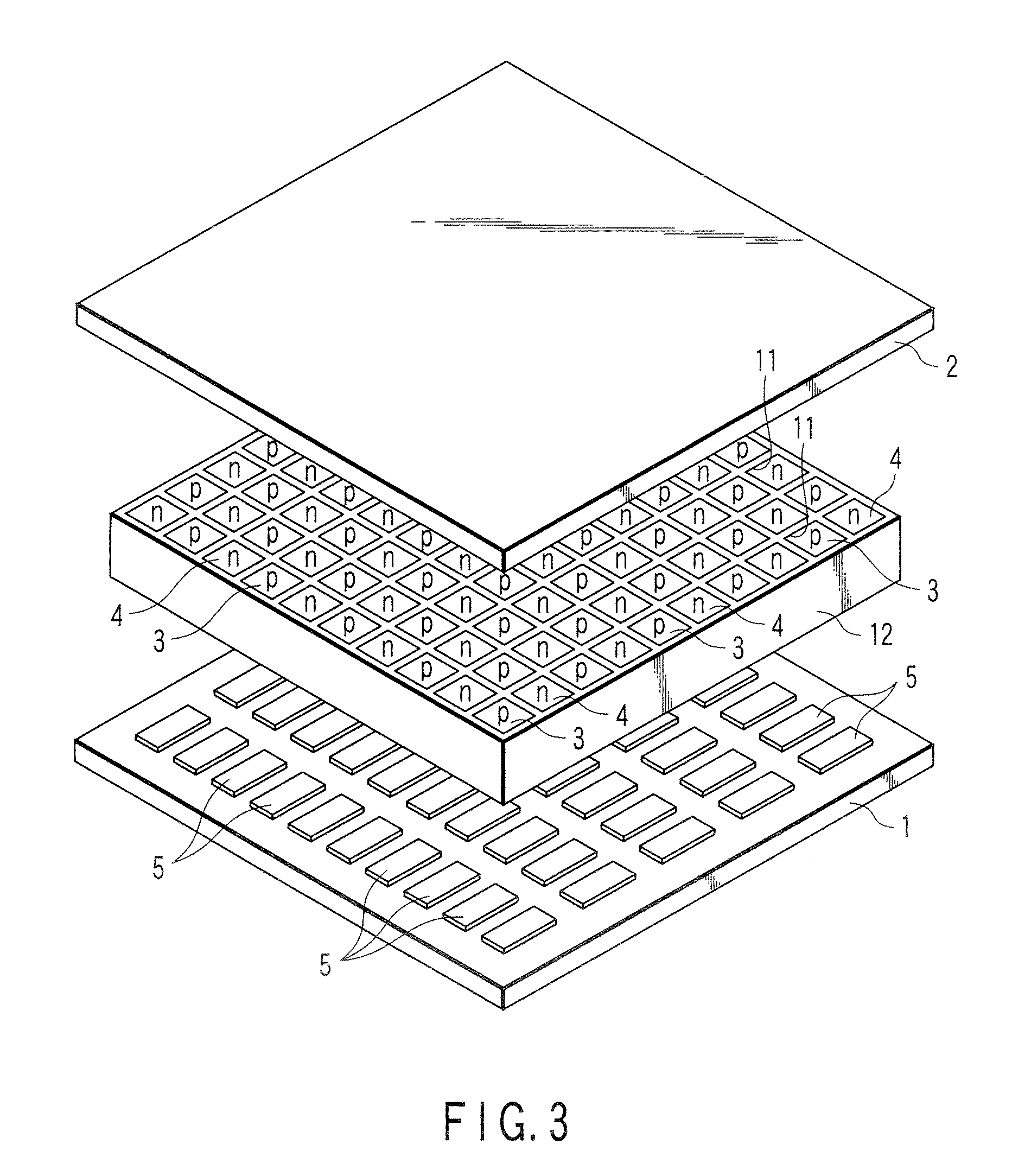Thermoelectric conversion module and method of manufacturing the same
a technology of thermal conversion module and thermal conversion module, which is applied in the direction of thermoelectric devices with peltier/seeback effect, basic electric elements, electric apparatus, etc., can solve the problems of difficult efficient energy recovery, inability to increase t in equation (1), and restricted use of these metals in a high temperature/highly oxidizing atmospher
- Summary
- Abstract
- Description
- Claims
- Application Information
AI Technical Summary
Benefits of technology
Problems solved by technology
Method used
Image
Examples
example 1
[0053]A paste was prepared by mixing a lead-free glass powder (trade name: JV-35, manufactured by Matstunami Glass Industry Ltd.) in a solution comprising 5% by weight of polyvinyl alcohol (PVA) dissolved in dimethylsulfoxide (DMSO). Then, the paste was extruded with a die and dried to obtain a honeycomb frame having 10×10 square through holes. Subsequently, 50 square columns each of p-type and n-type half-Heusler thermoelectric transducers (100 columns in total) were inserted into the through holes of the honeycomb frame such that p-type and n-type thermoelectric transducers were arranged as a checker to one another. (Ti0.3Zr0.35Hf0.35)—CoSb0.85Sn0.15 was used as the p-type thermoelectric conversion material, and (Ti0.3Zr0.35Hf0.35)—NiSn0.994Sb0.006 was used as the n-type thermoelectric conversion material.
[0054]Then, the honeycomb frame having the thermoelectric transducers inserted therein was sandwiched between first and second insulated substrates made of silicon nitride cerami...
PUM
 Login to View More
Login to View More Abstract
Description
Claims
Application Information
 Login to View More
Login to View More - R&D
- Intellectual Property
- Life Sciences
- Materials
- Tech Scout
- Unparalleled Data Quality
- Higher Quality Content
- 60% Fewer Hallucinations
Browse by: Latest US Patents, China's latest patents, Technical Efficacy Thesaurus, Application Domain, Technology Topic, Popular Technical Reports.
© 2025 PatSnap. All rights reserved.Legal|Privacy policy|Modern Slavery Act Transparency Statement|Sitemap|About US| Contact US: help@patsnap.com



